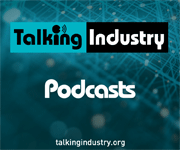
MHz switching frequency-based devices enable miniaturization of the DC-DC converter and EMI filters
Achieving EMI conducted emission compliance for automobiles with a single stage filter. By Nicola Rosano, Sr. Strategic FA/System Engineer at Vicor
More details...
A full brick package developed by TDK-Lambda, the PF1500B-360, is for high voltage distributed power architectures
More details...
 Its analysts believe last year’s ‘concrete and real’ description of the SiC (silicon carbide) power business continues and that the SiC industry is gaining in strength. End users are trying SiC and building prototypes. “SiC technology’s added value is today widely understood and accepted by the power electronics community”, believes Dr Hong Lin, technology and market analyst at Yole Développement. “We are gradually going from the customer awareness and education stage to the customer trial and adoption stage. And this is especially true for SiC transistors,” he adds.
Its analysts believe last year’s ‘concrete and real’ description of the SiC (silicon carbide) power business continues and that the SiC industry is gaining in strength. End users are trying SiC and building prototypes. “SiC technology’s added value is today widely understood and accepted by the power electronics community”, believes Dr Hong Lin, technology and market analyst at Yole Développement. “We are gradually going from the customer awareness and education stage to the customer trial and adoption stage. And this is especially true for SiC transistors,” he adds.
There are other positive signals, such as a 6% compound annual growth rate (CAGR) for the power electronics industry in the period 2016 and 2022, coupled with new applications driving the adoption of SiC devices.
The report describes the industrial landscape, from materials to systems, per market segment and proposes valuable market value projections up to 2022. Yole’s analysis also highlights SiC-based devices, modules, and power stacks. The analyst firm believes 2019 will see SiC adoption reach a tipping point, as power factor correction (PFC), photovoltaic (PV) and x-electric vehicle (xEV) applications enable the adoption of SiC technologies.
“The total SiC device market will be worth more than US$1 billion in 2022”, says Dr. Hong Lin from Yole. He goes on to predict market growth acceleratation after 2020, with a 40% CAGR from 2020 to 2022.
Applications like PFC /power supplies and PV inverters are driving the SiC market growth today, although its market share is expected to decrease as new applications, such as xEV related applications and rail emerge..
SiC solutions propose a better performance/cost ratio at the system level for string PV inverters, while xEV supplier, BYD, has confirmed it is using SiC on its on board charger. On-board charger is embracing SiC technology and SiC devices’ pre-2020 market volume in automotive applications will mainly be for on-board chargers, says Yole. For main inverters, most original equipment (OEM) and tier one suppliers are testing SiC devices. Some, like Toyota, Nissan, and Honda, are expected to release SiC-based solutions around 2020. After 2020, due to the high power rating of main inverter, even low adoption rate will contribute to important revenue after 2020.
View PDF
| Privacy Policy | Site Map | © Copyright DFA Media
| Web design by Immersive Media


